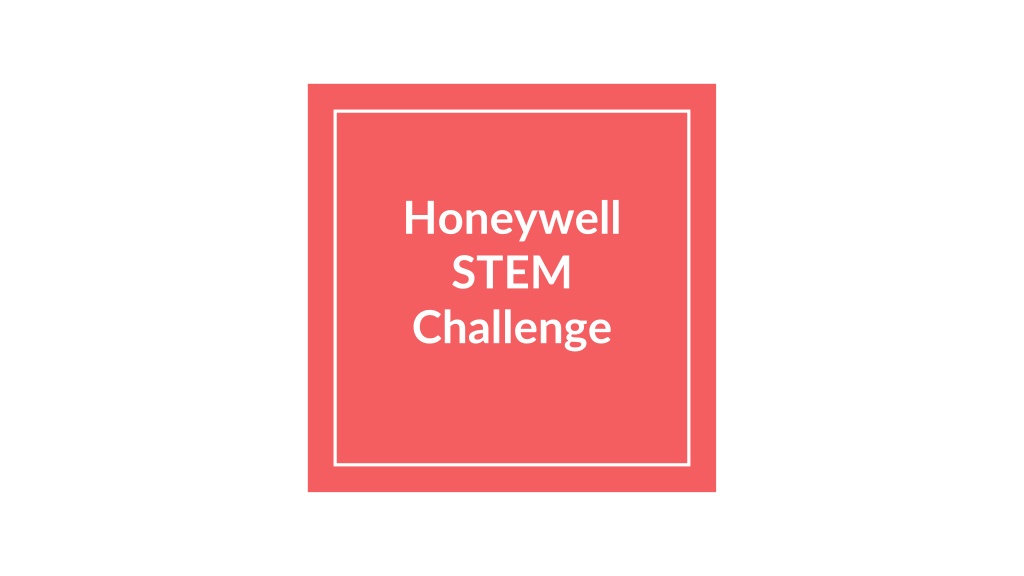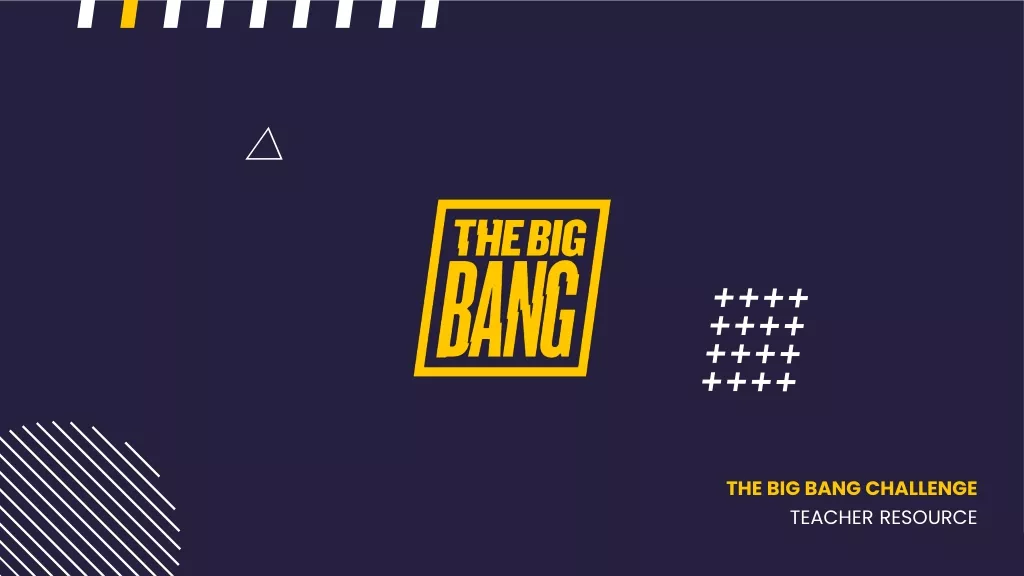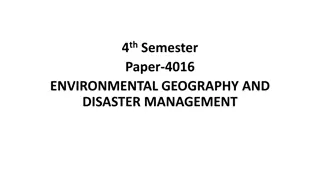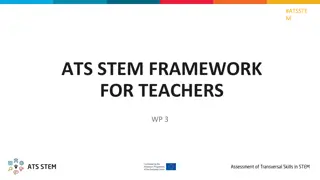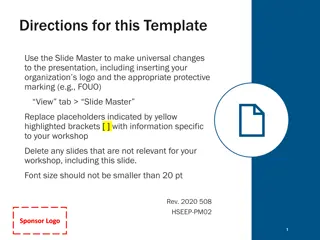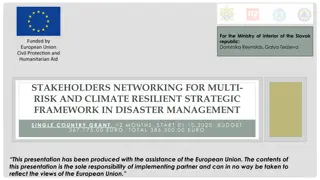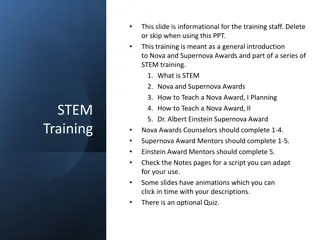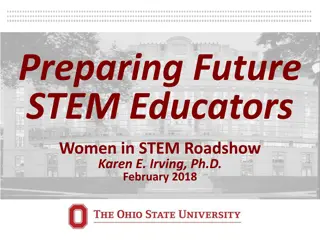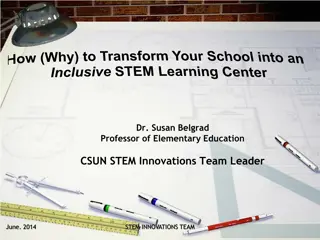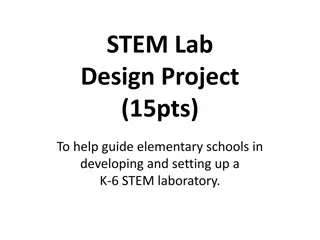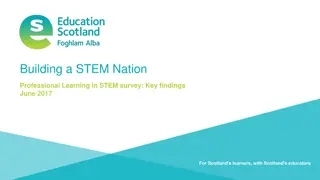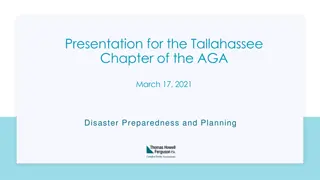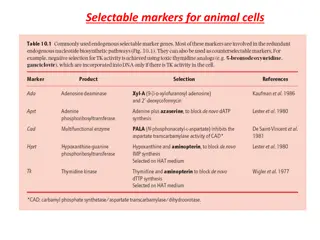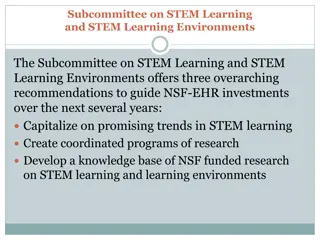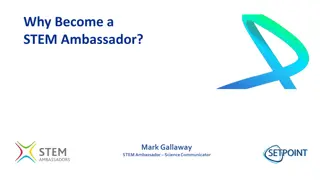Honeywell STEM Challenge - Designing Technology Solutions for Disaster Preparedness
Design a technology-based solution for disaster preparedness and response as part of the Honeywell STEM Challenge. The challenge tasks students with creating projects that address social issues related to natural or manmade disasters in homes, schools, or communities. Examples of project themes include child safety, smart homes, interactive education, school safety, access to clean water, and smart cities. Students can work in teams and have a spending limit of $30 per project. The competition encourages innovative thinking and social impact through the use of technology solutions.
Download Presentation

Please find below an Image/Link to download the presentation.
The content on the website is provided AS IS for your information and personal use only. It may not be sold, licensed, or shared on other websites without obtaining consent from the author. Download presentation by click this link. If you encounter any issues during the download, it is possible that the publisher has removed the file from their server.
E N D
Presentation Transcript
Honeywell STEM Challenge
The Challenge Task: Design a technology-based solution to a problem in your home, school or community. The solution you design should be a driver of social good. Theme: Disaster preparedness and response -- How can your project help avert, prepare for, or respond to natural or manmade disasters and crisis?
Examples Home Solutions: Child safety from accidental injuries; safe homes (burglary, fire, floods, gas leaks, intrusion); assistance for people with physical disabilities; assistance for the elderly; smart homes. School Solutions: Interactive education related to the theme; controlling/monitoring resources (such as water, food or energy); school safety/crisis situations (weather events, situations involving hazardous materials, armed intruder, bomb threat); smart schools. Community Solutions: Access to clean water; environmental monitoring; wearable technology; decreasing hunger; safe cities; using data to target community problems; smart cities.
Past Projects - Firebot Firebot Video.MOV Aryan Thakkar, Jacob Sung, Kavin Kumaresan, and Maxwell Wang Autrey Mill Middle School Fulton County Teacher: Sharon McGee Winner of the Innovation Award
Past Projects - Blindsight Blindsight video.mp4 Divij Motwani & Pettrus Konnoth Autrey Mill Middle School Fulton County Teacher: Sharon McGee Winner of 1st Place Overall
Past Projects - Blindsight Care Kit video.mp4 Iyahna Wright, Sa'Niya Fallin, Takeria Evans, and Nyla Smith Hollis Innovation Academy Atlanta Public Schools Teacher: Nichole Jones Winner of the Impact Award
The Basics Platform: Students may use any or all supplies found in one micro:bit tinker kit. Any additional supplies count towards the project s spending limit. Projects may also be stand-alone scripts or programs that do not require the use of a micro:bit. Coding language: Any Spending limit: $30 per project (excludes micro:bit tinker kit and basic arts/craft supplies provided by the teacher). Team projects: Projects of 2 - 4 students, limit of 15 projects per teacher.
The Dates August 19, 2019 -- STEM Challenge Announcement (The previous cohort of STLP teachers also is invited) September 20, 2019 -- Schools submit max project count estimates November 20, 2019 -- Final submission of STEM Challenge projects December 18, 2019 -- STEM Challenge finalists announced January 30, 2020 -- STEM Challenge showcase at GT. Overall winners determined
The Submission Expected outcome: A prototype that demonstrates the concept of the solution, crafted using the engineering design process. Challenge Log: Students must document their design process through a challenge log. See the Challenge Framework for more details. Video Presentation: A proof-of-concept and project overview video, uploaded to Youtube, no longer than 10 minutes. See Challenge Framework for more details.
The Winners Initial Finalists Pool (25 Finalists, Before Showcase): 20 Top Projects from the districts by proportion of STLP participation 5 overall top projects (regardless of district and not from within the 20) Final Overall Winners (10 winners, Determined at Showcase): Top 3 Overall by Division Top 3 Middle School Projects (Junior Division) Top 3 High School Projects (Senior Division) Two Special Awards Innovation Award -- For the project demonstrating a novel or exceptionally creative solution within the Honeywell STEM Challenge. Impact Award -- For the project demonstrating an exceptional and realistic impact for social good in one s home, school, or community.
The Nitty Gritty See the STEM Challenge Framework for more details like: Project examples Challenge Log criteria The initial rubric How to register ...and more! Be sure to read it!
